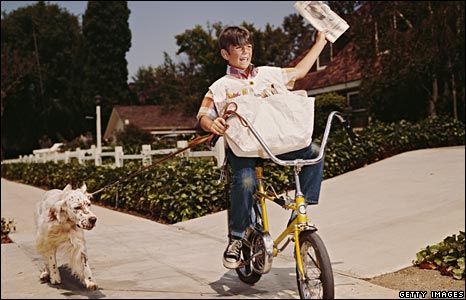Entries in wind farm ag land damage (1)
9/1/10 Sow the wind turbine, reap the crop damage AND...Wind Action Asks the hard Question: How compatible are wind farms and agriculture? AND Wind Turbines in the News AND A new understanding about wind turbine noise AND A letter from a participating wind project landowner from Columbia County to landowners in Brown County
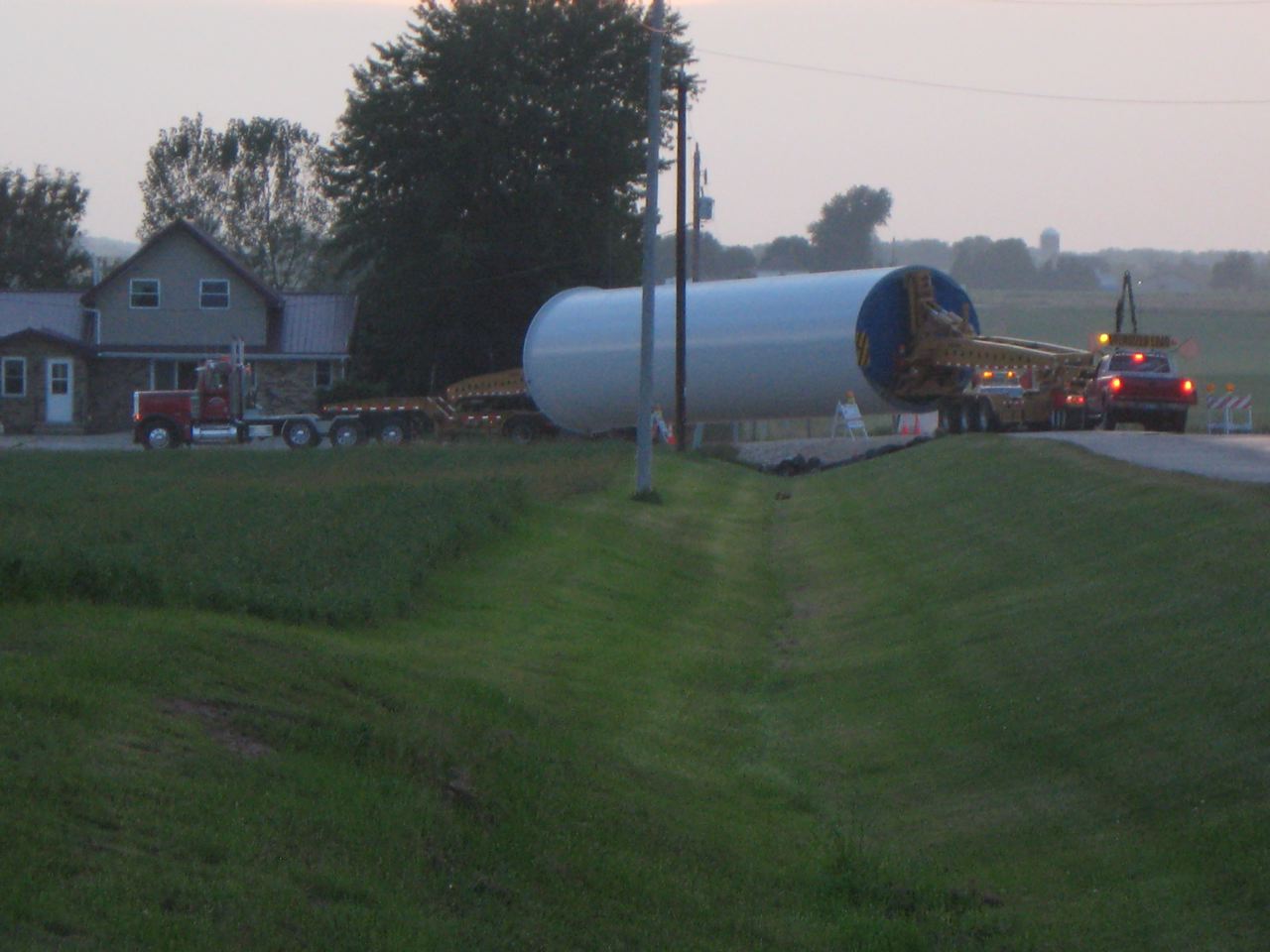
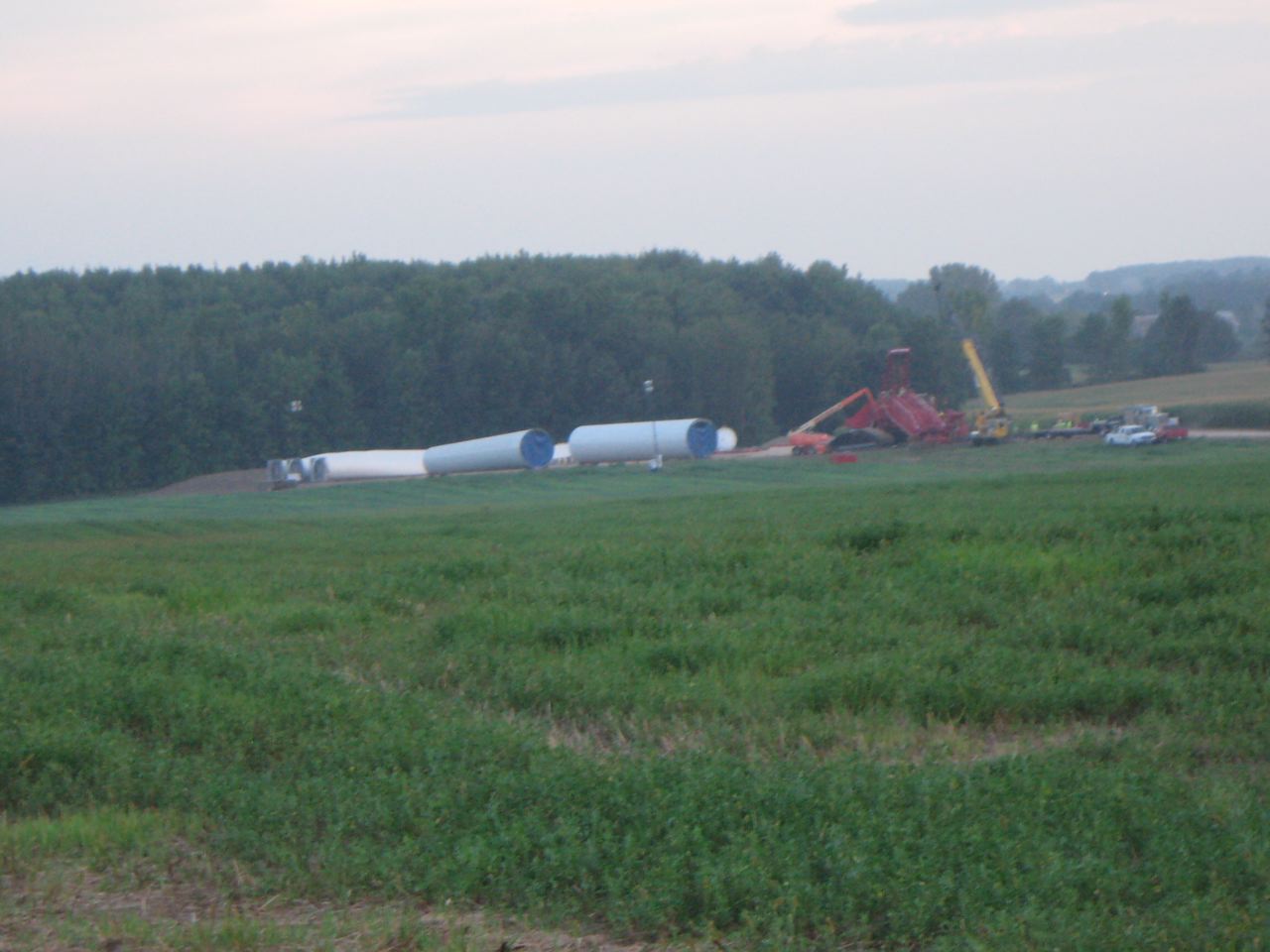 Construction begins on what will be the tallest wind turbines in the state. Town of Glenmore, Brown County Wisconsin. More photos throughout this post.
Construction begins on what will be the tallest wind turbines in the state. Town of Glenmore, Brown County Wisconsin. More photos throughout this post.
Below is A letter from a participating landowner in the Glacier Hills project which is under construction in Columbia County. He address it to Brown County landowners in an area where Invenergy wants to site a large project called "Ledge Wind"
SOURCE: PSC Docket # 9554-CE-100
To the landowners in the Ledge Wind Project:
If you believe wind turbines are a good fit for a farm operation, a free source of clean energy, and a benefit to your community, I invite you to come to the Glacier Hills Project and witness the total devastation occuring during construction.
Seeing firsthand what is happening here would turn any responsible landowner's stomach.
Heavy rains have created erosion that will take years to repair.
The number of huge construction equipment and trucks burning fuel is staggering.
Good productive farmland is being ripped apart, and will never be the same.
The level of disgust is even affecting the most loyal supporters of this project.
Hatred of this project is growing worse as each day passes, and we will be forced to live with this for the rest of our lives, all because a few irresponsible landowners, myself included, were taken in by wind developers lies.
All this for chump change.
Gary Steinich
Cambria, Wisconsin
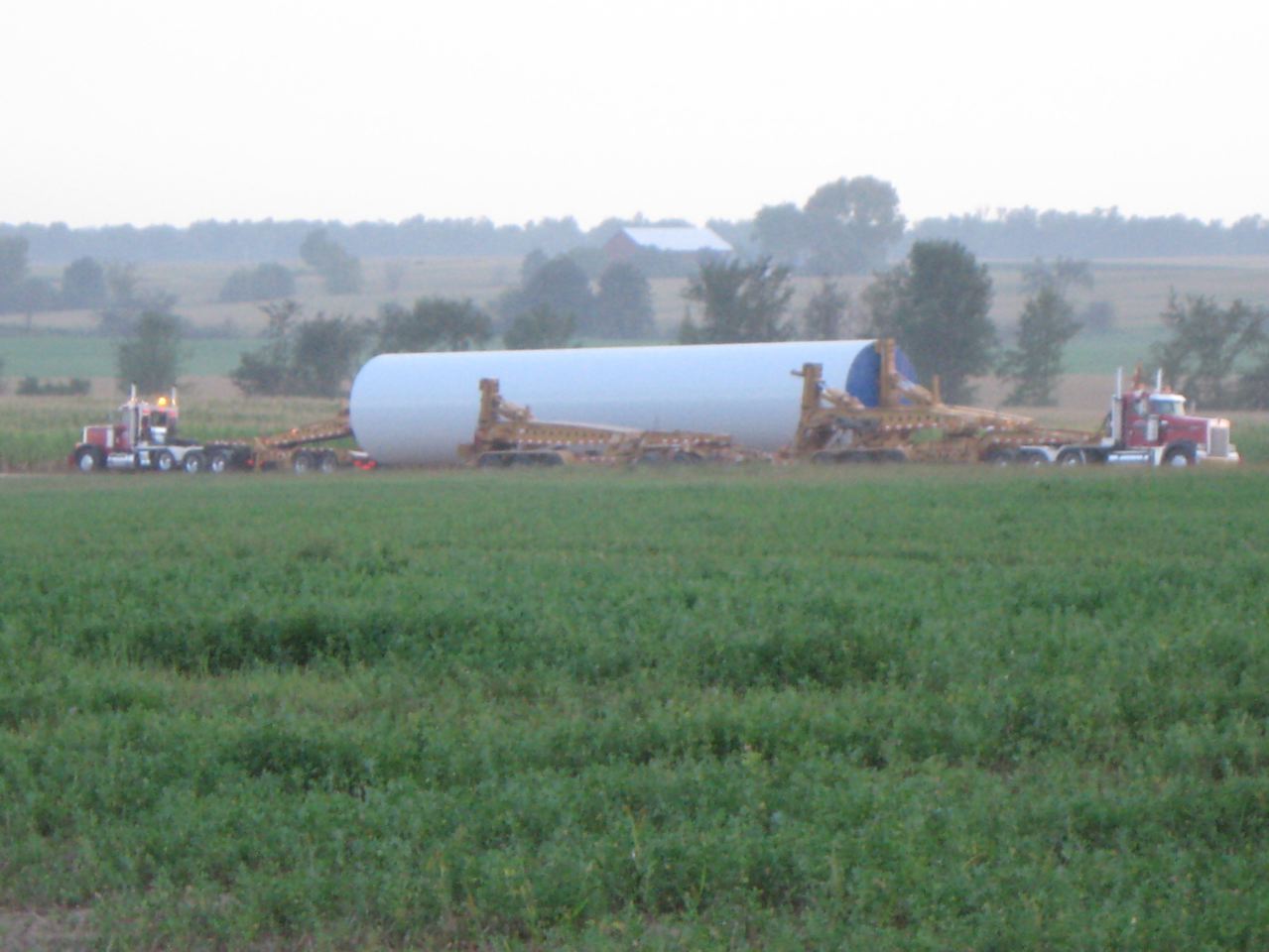
Is wind "farming" compatible with agriculture?
August 25, 2010
We're frequently reminded that wind energy and agriculture are compatible land uses. Farmers who lease sections of their crop land for wind development can continue working the soil right up to the towers and earn extra revenue for farming expenses. A win-win business opportunity, right? Not so fast. In this two-part series, Windaction.org examines the wind-farming relationship in the State of Illinois and tests the claim that the two are a good fit. As with so many topics involving wind energy, there is another story behind the story.
Back in 2007, Windaction.org posted a document entitled "What have I done?" The piece, written by Don Bangart of Chilton, Wisconsin, was based on a two- hour interview he conducted with a farmer in Northeast Fond du Lac County who agreed to lease a portion of his land for wind development. In the interview, the landowner makes several observations including this about how his land was managed:
"I watched stakes being driven in the fields and men using GPS monitors to place markers here and there. When the cats and graders started tearing 22 foot wide roads into my fields, the physical changes started to impact not only me and my family, but unfortunately, my dear friends and neighbors. Later, a 4 foot deep by 2 foot wide trench started diagonally across my field.
"A field already divided by their road was now being divided again by the cables running to a substation. It was now making one large field into 4 smaller, irregularly shaped plots. ...We soon realized that the company places roads and trenches where they will benefit the company most, not the land owner. ... All of the rocks we labored so hard to pick in our youth were replaced in a few hours by miles of roads packed hard with 10 inches of large breaker rock. Costly tiling we installed to improve drainage had now been cut into pieces by company trenching machines."
The Wisconsin farmer's experience is not unique.
Illinois has some of the best farming soil in the world with McLean County, Illinois rated #1 for the darkest, blackest most productive soil in the world.
But after extensive land moving and excavation needed to build roads and erect the turbines, farmers tell Windaction.org that the ground is never the same afterward. The fertile soil around the towers is mixed with subsurface clay and compacted resulting in lower crop yields. Depending on the lease terms, developers may compensate landowners for crop reductions but payments are often not passed on to tenant farmers who suffer the actual losses.
Since compaction is assumed to be a construction-related impact, crop-loss payments are often time-limited up to five years. However, every time turbines require maintenance, the massive crane is brought back to the site making compaction an ongoing concern throughout the life of the project. And it's not limited to existing roads or turbine pads. Turbine maintenance crews prefer to crawl across fields -- flattening crops and ground -- for quicker access to turbines needing service.
If drainage tiles are cut or damaged during construction, you're apt to see farmers working around ponds that were previously nonexistent. Or worse, adjacent fields not under lease can flood. With competition for rentable farmland so fierce, local tenant farmers risk losing their farms if they complain.
Soil compaction and drainage issues are serious concerns, but some might argue their effects are localized, and thus manageable. But that cannot be said about the impact of wind turbines on aerial spraying -- a subject that gets very little exposure.
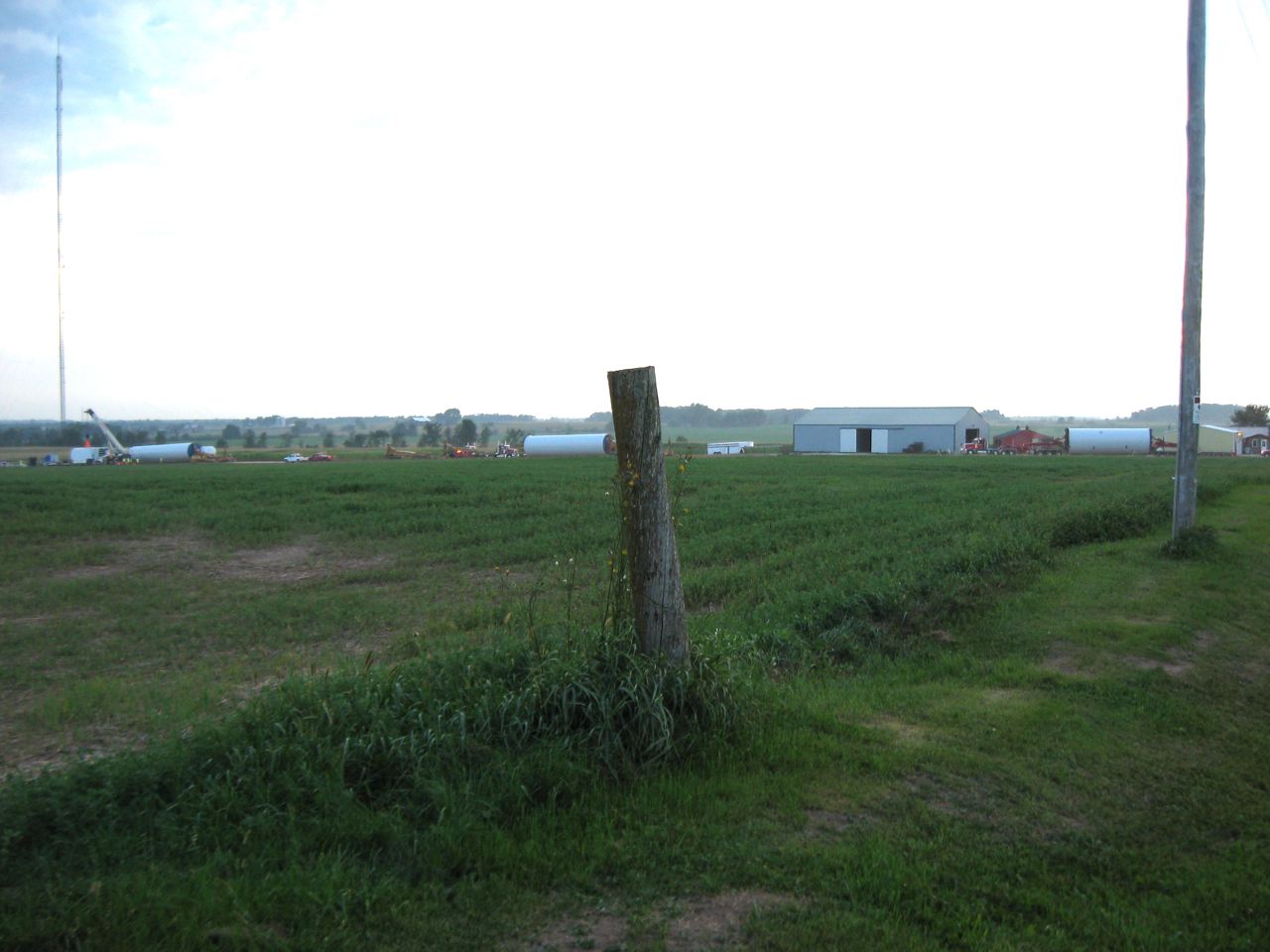
The ability to secure aerial spraying services is limited in areas where turbines are standing.
The message on the Illinois Agricultural Aviation Association (IAAA) website is clear:
"...farmers with wind generators may lose the option of aerial application of farm protection products, seed, fertilizers, etc. on their farm ground. Possibly more significant is that their neighbor farmers, who have no wind generator(s) and consequently no income from them, stand to lose that option as well.
"Some proponents of wind farms tend to dismiss this possibility out of hand, with the explanation that "those guys can fly around them with no problem," or "just get a helicopter to do it." Others say that ground application can still be effectively performed so the aerial option is insignificant. Unfortunately, it is just not that simple. Sometimes weather problems and/or timeliness of application dictate an application from the air.
"The fact is, it is dangerous to fly within the confines of a wind generator farm."
As more and more towers go up, less and less fields can be sprayed. Experienced pilots can feel the wake effect of the towers from several miles away. Such turbulence is dangerous to fly through.
Helicopters may be recommended because they travel at slower speeds and can work in more confined spaces but they can't carry the same loads meaning more trips at higher costs. There are far fewer helicopters in the State (under 10 in total) so timely availability is a critical issue.
Some farmers try ground applicators but aircraft can cover crops faster and more efficiently than any ground rig. In cases of Asian soybean rust, farmers could experience an 80-100% yield loss if not treated within a week. Aphids or spiders mites can destroy a field within days. If infestations occur during wet years ground equipment on wet soil will cause compaction or ruts that lead to erosion.
Illinois County Boards tasked with approving new wind development appear willing to accept that aerial applications are still possible but with more difficulty and at a higher cost (most spray policies charge premiums up to 50% above standard costs on fields within a mile of the towers, whether a participating landowner or not). What they do not seem to realize is that as more wind farms are permitted, the cumulative effect will lead to fewer and fewer fields that can be sprayed, making total crop loss a real possibility.
Since crop insurance will not cover the farmer in cases of insects or plant disease where damage is "due to insufficient or improper application of pest control measures or disease control measures", crop loss could lead to significant financial losses for farmers.
Illinois farm land has nearly 1900 megawatts of wind turbines installed across thousands of acres of farm land and thousands more slated for development. Absentee landowners may be gaining financially from the development, but the idea that "wind farming" is a compatible agriculture use is more myth than reality in Illinois.
Special thanks to Rick Reed, president of IAAA, who provided valuable information on aerial spraying.
Wind Turbines in the News
For the latest national and international wind news visit
News
GREEN PARTY OF CANADA CALLS FOR WIND TURBINE HEALTH STUDY:
Source: Green Party of Canada Website
Considerations:This motion, in calling for a study on the human health effects of wind turbines, would create a new policy and could potentially call into question some of the party's policies on significantly increasing the amount of energy produced through wind turbines.
Motion Preamble:WHEREAS the Green Party of Canada recognizes the vast potential for wind energy in Canada;
WHEREAS the Green Party of Canada with the Canadian Wind Energy Association has set goals for Canadian wind energy generation;
WHEREAS many citizens in communities with wind turbines claim to be experiencing sleep deprivation, headaches, and heart complications related to wind turbines;
WHEREAS one of the largest obstacles preventing accelerated wind energy development is resistance from citizens near planned turbine sites;
WHEREAS the largest investment Canadians make, their home, is affected as much by real health risks as perceived ones;
WHEREAS many provincial governments have compromised their objectivity with respect to wind energy development;
WHEREAS the Green Party of Canada considers healthy people and healthy communities as necessary for a strong Canada;
Motion Operative:THEREFORE BE IT RESOLVED that the Green Party of Canada seeks to have Health Canada initiate an epidemiological study on the human health effects of wind turbines in the interests of public health and safety.
Dong giving up on land-based turbines
Mass protests mean the
energy firm will look offshore
SOURCE: The Copenhagen Post Online
September 1, 2010
State-owned energy firm Dong Energy has given up building more wind farms on Danish land, following protests from residents complaining about the noise the turbines make.
It had been Dong and the government’s plan that 500 large turbines be built on land over the coming 10 years, as part of a large-scale national energy plan. This plan has hit a serious stumbling block, though, due to many protests, and the firm has now given up building any more wind farms on land.
SOURCE, ” On the Level: Quarterly Newsletter of the Vestibular Disorders Association (Summer 2010, p. 9)“Wind Turbines Can Affect Inner Ear Function,
Scientists have determined how infrasound from wind turbines may influence inner ear function.
An increasing number of people living near wind turbines report a group of symptoms termed “wind turbine syndrome” that include sleeplessness, dizziness, fatigue, ear pain and pressure, difficulty concentrating, and headache.
Up until now, many scientists who study hearing claimed that noise from wind turbines couldn’t be harmful because it occurred at a frequency too low for most people to hear.
Researchers at Washington University in St. Louis, Missouri successfully challenged this conventional wisdom that “what you can’t hear won’t hurt you.” They noted that one type of inner-ear sensory cell behaves differently when encountering infrasound.
Usually these cells respond to sound by contracting and expanding proteins within their walls, amplifying vibrations, which in turn stimulate other sensory cells to send electrical signals about sound to the brain. However, the proteins do not respond in the same way to infrasound and instead actively prevent stimulation of the cells that transmit sound signals.
So, while the brain may not receive information about sound, a physiological response to infrasound has occurred in both the cochlea and the other sensory structures in the inner ear such as the saccule, possibly explaining the unfamiliar sensations experienced by some people.
Reference:
Salt AN, Huller TE. “Responses of the ear to low frequency sounds, infrasound and wind turbines.” CLICK HERE TO DOWNLOAD Hearing Research 2010 Sep 1;268(1-2):12-21. Epub 2010 Jun 16.

